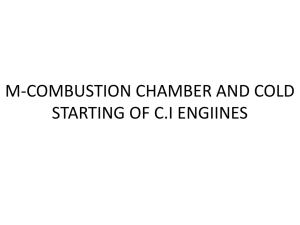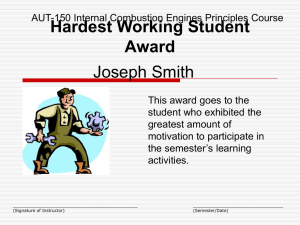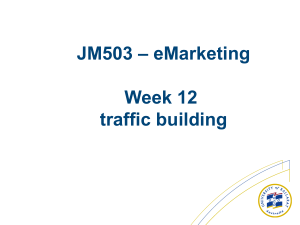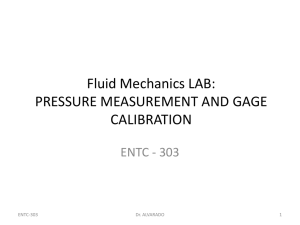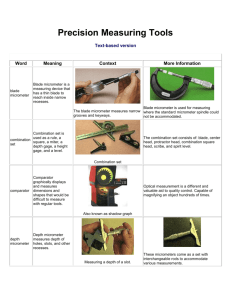Measuring Engine Components and Specifications
advertisement
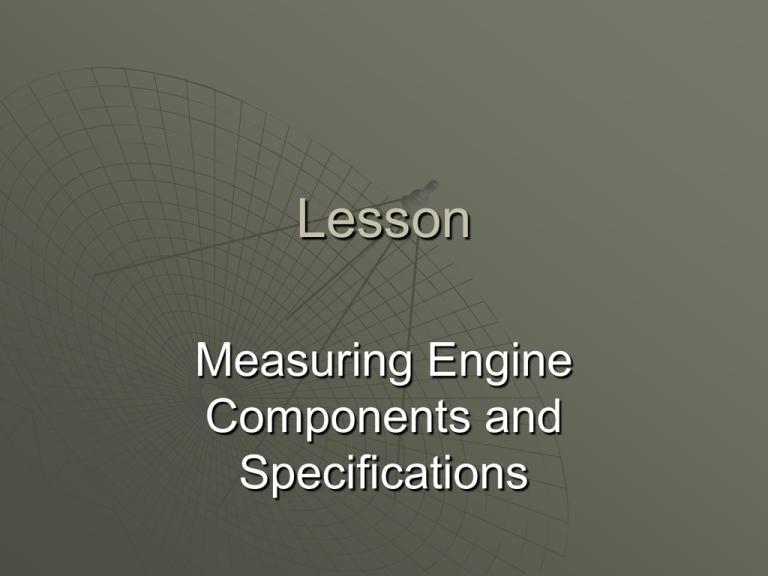
Lesson Measuring Engine Components and Specifications Interest Approach How are internal combustion engine specifications determined? Student Learning Objectives Identify measuring and testing equipment for internal combustion engines Identify the specifications of an internal combustion engine Explain four major specifications to be checked on small engines. Terms Compression gage Dial indicator Flat feeler gage Inside micrometer set Micrometer caliper Plastigage Round-wire gage Tachometers Telescoping gage Torque wrench Tools Used in Measuring Engine Components Micrometer caliper – precision measuring tool for taking outside measurements. Inside micrometer – determines the inside of a cylinder. Tools Used in Measuring Engine Components Flat feeler gage – recognizes the spacing between two surfaces. Dial indicator – recognizes the spacing between two surfaces and records readings of the dial needle. Tools (continued) Round-wire gage – used in measuring the electrode gap of spark plugs. Plastigage – a thin, plastic, threadlike material used to measure the clearance between the bearing journal on a crankshaft and the bearing rod cap. Plastigage Tools (continued) Torque wrench – the hand tool used for torque which bolts and nuts must be tightened to. Compression gage – helps in determining if there is a problem with the cylinder, piston rings, valves, or gaskets. • It measures compression pressure in pounds per square foot. Compression Gage Tools (continued) Telescoping gage – a tool used for measuring inside diameter. Tachometers – used for reading revolutions per minute. Telescoping Gage Specifications of an internal combustion engine Charts detail the exact specification to increase performance and prolong life. • Related to engine size and work requirements. • Clearances of the intake and exhaust valves . Four major specifications on small engines Fuel Oxygen Compression Ignition Fuel Use the fuel recommended by the manufacturer. Guidelines for carburetor adjustments: • Turning valve clockwise creates leaner fuel mixture. • Turning valve counter clockwise creates richer fuel mixture. Oxygen Engines need to take in clean air in order for combustion to occur. • Air filters should be routinely checked and cleaned. Compression Not having compression indicates a serious problem in the engine. Quick test method: pull the starter rope. If there is no resistance against the starter rope, the engine lacks compression. Ignition Routinely check spark plugs. Clean the electrodes with a wire brush. If reinstalling spark plugs, the plug gap should be adjusted properly. Setting the gap on a spark plug Review / Summary What are some of the instruments used for measuring internal combustion engines? What are the specifications of an internal combustion engine? What are four major specifications that are commonly checked on small engines?




